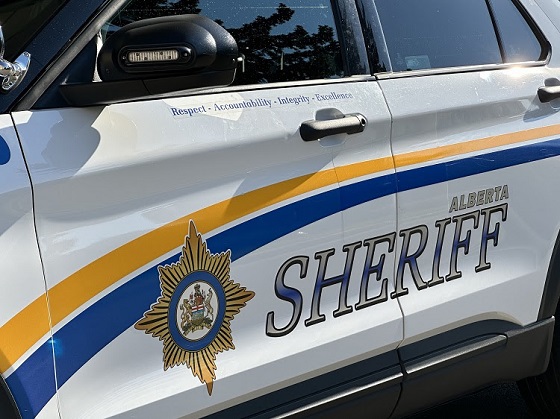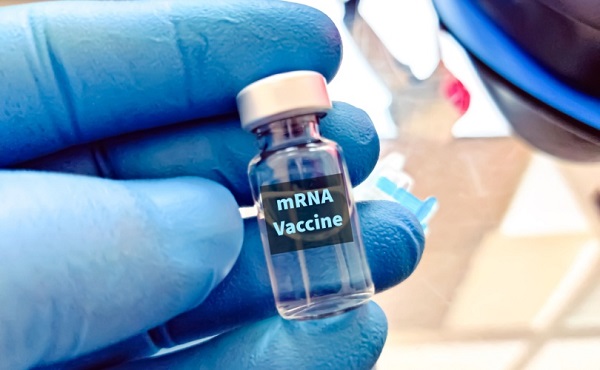Alberta
What Was The Dangerous Purpose?

From the Frontier Centre for Public Policy
By Ray McGinnis
During the trial, RCMP officers described what they found as “pipe bombs” in the Tony Olienick’s Claresholm, AB, property after his arrest. They alleged that these were to be used for a dangerous purpose. During the Coutts Blockade, the “explosive” device remained on Olienick’s property, a two-hour drive away.
On August 2, a Lethbridge jury found Chris Carbert and Tony Olienick not guilty of the most serious charge of conspiracy to commit murder of police officers. However, both were found guilty of possession of weapons for a dangerous purpose.”
After the verdict, Newsweek reported “documents obtained under an Access to Information and Privacy Act request showed that the RCMP had been profiling protesters by running license plates through databases, then focusing in on those who possessed federal gun licenses.”
Possession of a Weapon for a Dangerous Purpose
Olienick’s lawyer, Marilyn Burns told this reporter of the charge, “I have not found a case where the charge of possession of a weapon for a dangerous purpose has not been twinned with an act of murder, violence.” This section of the Canadian Criminal Code, she explained, “has two categories: “dangerous purpose for the public peace” or for “another criminal act.” The charge brought by the Crown against Carbert and Olienick was for “possession of a weapon for a dangerous purpose” being “dangerous for the public peace.”
Tony Olienick didn’t have any weapons while he was standing outside of Smugglers Saloon at the time he was arrested. He had a rifle and a 22, and had moved them from his truck to the trailer. There were several guns in the trailer Chris Carbert was sleeping in at the time of his arrest. However, when he came out of the trailer to be arrested, he was unarmed. During the trial, it was confirmed it’s not illegal to have firearms in your camper trailer. It’s legal to have firearms for self-defence in your camper trailer to defend yourself against a civilian intruder. No guns were seen in public. Carbert, Olienick (and Lysak) snuck the guns into the trailer when no one saw them to make it safe – so nothing would happen accidentally to someone in view.
What was the Dangerous Purpose?
Chris Carbert’s lawyer, Katherin Beyak, summarized, “The evidence wasn’t there for Chris needing to have a firearm for self-defence at the blockade, that evidence just didn’t come forward. That’s why I’m trying to figure out what the dangerous purpose was. Other than, perhaps, the jury didn’t think there was a valid purpose for having a firearm at the protest. I don’t know, and we can’t ask them (the jury).” Asked about the jury decision, Beyak said the jury decision may have been “more of a statement that this was supposed to be peaceful, and you shouldn’t have had firearms there.”
The message from this verdict to Canadians may mean even if you are unarmed, you shouldn’t have firearms in the vicinity of a municipality where there is a protest.
Explosive Witness Testimony
The jury also found Tony Olienick guilty of possession of explosives for a dangerous purpose.
Brian Lambert, a sandstone quarry owner and colleague of Olienick, testified at the trial. He described an explosive device, nicknamed “firecrackers” in the business, he observed Olienick use years ago. Lambert testified Tony Olienick use these “firecrackers” to dislodge stone that would get sold and repurposed for construction. Olienick’s father served as a peacekeeper in the Canadian Armed Forces in Cypress. A stone quarry in southern Alberta occasionally got drill bits stuck in the stone. Olienick’s father created an explosive device with plumbing pipe, ordinary gunpowder, and a fuse that can be purchased at a hobby store. It was used to dislodge drill bits from a stone. After he died, the “firecracker” device was gathered up by Tony Olienick along with other items from his father’s estate. The son moved it onto his property. While the late Mr. Olienick had a permit to use the device, his son didn’t renew the permit for the explosive device.
Marilyn Burns, lawyer for Tony Olienick, relates the RCMP went through everything to find that device in a pile of other belongings of her client’s late father. During the trial, RCMP officers described what they found as “pipe bombs” in the Tony Olienick’s Claresholm, AB, property after his arrest. They alleged that these were to be used for a dangerous purpose. During the Coutts Blockade, the “explosive” device remained on Olienick’s property, a two-hour drive away.
A Warning
One takeaway from the jury verdict: if you go to a protest, make sure any explosive device you have at your property has a permit. Otherwise, even if the device in question is a two-hour drive away, you could be found guilty of possession of explosives for a dangerous purpose.
This commentary is second of a three part series. Read part one here, and three here.
Ray McGinnis is a Senior Fellow with the Frontier Centre for Public Policy. His forthcoming book is Unjustified: The Emergencies Act and the Inquiry that Got It Wrong
Alberta
Made in Alberta! Province makes it easier to support local products with Buy Local program

Show your Alberta side. Buy Local. |
When the going gets tough, Albertans stick together. That’s why Alberta’s government is launching a new campaign to benefit hard-working Albertans.
Global uncertainty is threatening the livelihoods of hard-working Alberta farmers, ranchers, processors and their families. The ‘Buy Local’ campaign, recently launched by Alberta’s government, encourages consumers to eat, drink and buy local to show our unified support for the province’s agriculture and food industry.
The government’s ‘Buy Local’ campaign encourages consumers to buy products from Alberta’s hard-working farmers, ranchers and food processors that produce safe, nutritious food for Albertans, Canadians and the world.
“It’s time to let these hard-working Albertans know we have their back. Now, more than ever, we need to shop local and buy made-in-Alberta products. The next time you are grocery shopping or go out for dinner or a drink with your friends or family, support local to demonstrate your Alberta pride. We are pleased tariffs don’t impact the ag industry right now and will keep advocating for our ag industry.”
Alberta’s government supports consumer choice. We are providing tools to help folks easily identify Alberta- and Canadian-made foods and products. Choosing local products keeps Albertans’ hard-earned dollars in our province. Whether it is farm-fresh vegetables, potatoes, honey, craft beer, frozen food or our world-renowned beef, Alberta has an abundance of fresh foods produced right on our doorstep.
Quick facts
- This summer, Albertans can support local at more than 150 farmers’ markets across the province and meet the folks who make, bake and grow our food.
- In March 2023, the Alberta government launched the ‘Made in Alberta’ voluntary food and beverage labelling program to support local agriculture and food sectors.
- Through direct connections with processors, the program has created the momentum to continue expanding consumer awareness about the ‘Made in Alberta’ label to help shoppers quickly identify foods and beverages produced in our province.
- Made in Alberta product catalogue website
Related information
Alberta
Province to expand services provided by Alberta Sheriffs: New policing option for municipalities

Expanding municipal police service options |
Proposed amendments would help ensure Alberta’s evolving public safety needs are met while also giving municipalities more options for local policing.
As first announced with the introduction of the Public Safety Statutes Amendment Act, 2024, Alberta’s government is considering creating a new independent agency police service to assume the police-like duties currently performed by Alberta Sheriffs. If passed, Bill 49 would lay additional groundwork for the new police service.
Proposed amendments to the Police Act recognize the unique challenges faced by different communities and seek to empower local governments to adopt strategies that effectively respond to their specific safety concerns, enhancing overall public safety across the province.
If passed, Bill 49 would specify that the new agency would be a Crown corporation with an independent board of directors to oversee its day-to-day operations. The new agency would be operationally independent from the government, consistent with all police services in Alberta. Unlike the Alberta Sheriffs, officers in the new police service would be directly employed by the police service rather than by the government.
“With this bill, we are taking the necessary steps to address the unique public safety concerns in communities across Alberta. As we work towards creating an independent agency police service, we are providing an essential component of Alberta’s police framework for years to come. Our aim is for the new agency is to ensure that Albertans are safe in their communities and receive the best possible service when they need it most.”
Additional amendments would allow municipalities to select the new agency as their local police service once it becomes fully operational and the necessary standards, capacity and frameworks are in place. Alberta’s government is committed to ensuring the new agency works collaboratively with all police services to meet the province’s evolving public safety needs and improve law enforcement response times, particularly in rural communities. While the RCMP would remain the official provincial police service, municipalities would have a new option for their local policing needs.
Once established, the agency would strengthen Alberta’s existing policing model and complement the province’s current police services, which include the RCMP, Indigenous police services and municipal police. It would help fill gaps and ensure law enforcement resources are deployed efficiently across the province.
Related information
-

 Bruce Dowbiggin2 days ago
Bruce Dowbiggin2 days agoIs HNIC Ready For The Winnipeg Jets To Be Canada’s Heroes?
-

 COVID-192 days ago
COVID-192 days agoCOVID virus, vaccines are driving explosion in cancer, billionaire scientist tells Tucker Carlson
-

 Dr. Robert Malone2 days ago
Dr. Robert Malone2 days agoThe West Texas Measles Outbreak as a Societal and Political Mirror
-

 illegal immigration2 days ago
illegal immigration2 days agoDespite court rulings, the Trump Administration shows no interest in helping Abrego Garcia return to the U.S.
-

 Health2 days ago
Health2 days agoHorrific and Deadly Effects of Antidepressants
-

 2025 Federal Election2 days ago
2025 Federal Election2 days agoConservative MP Leslyn Lewis warns Canadian voters of Liberal plan to penalize religious charities
-

 2025 Federal Election1 day ago
2025 Federal Election1 day agoEuthanasia is out of control in Canada, but nobody is talking about it on the campaign trail
-

 Education1 day ago
Education1 day agoSchools should focus on falling math and reading grades—not environmental activism





